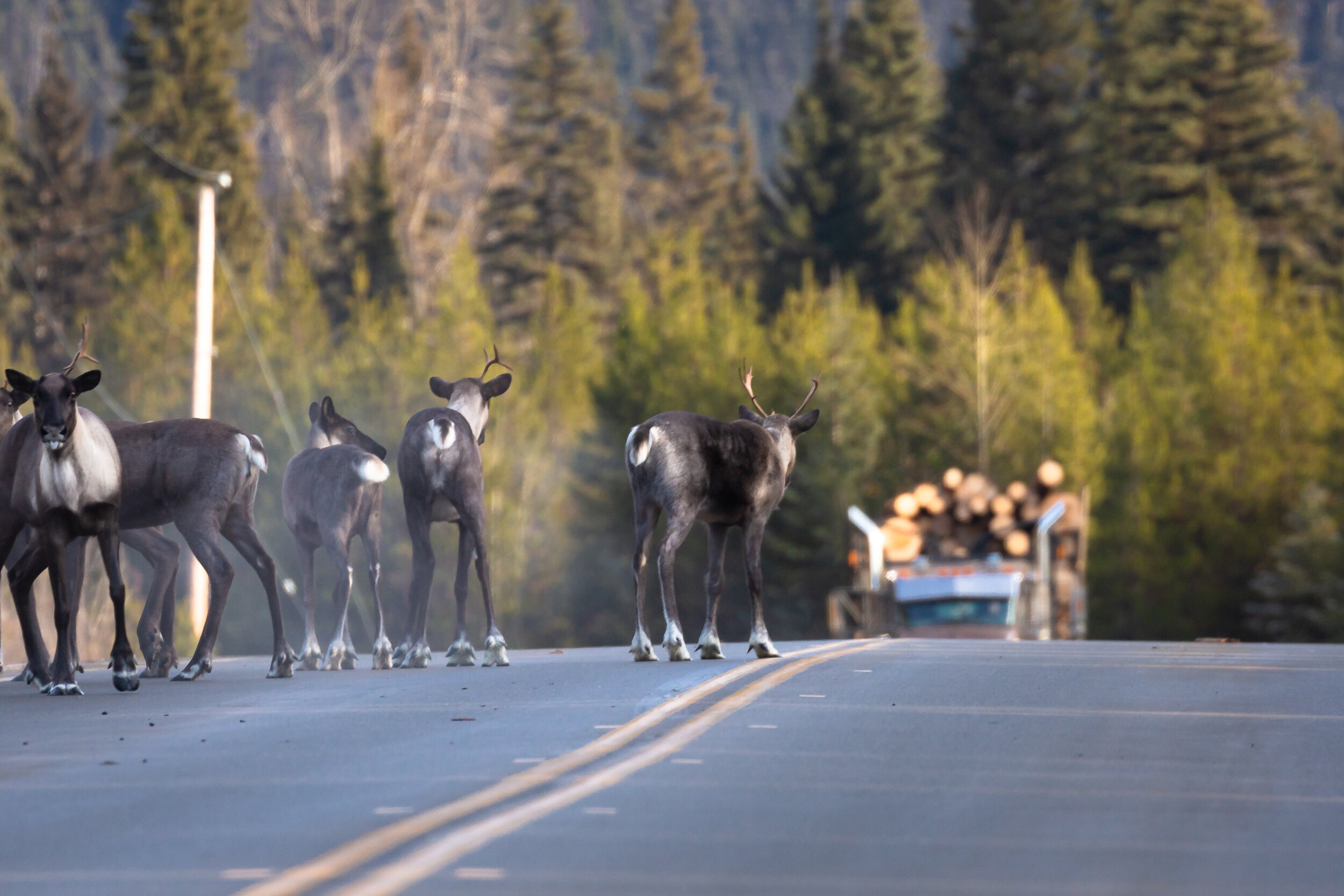
Threats to Caribou
Caribou abundance naturally fluctuates, but those naturals cycles are now being altered by human-induced factors and many populations are declining below sustainable levels.
Habitat change
Caribou depend on vast uninterrupted old-growth forests for food, shelter and seasonal migration. However, resource development, hydroelectric development, fire suppression, urban sprawl and agriculture has fragmented and altered much of their habitat.
Resource development: An important component of caribou winter diet is arboreal lichen. Forest harvesting, through logging, mining and oil and gas development, removes lichen-rich mature trees. Younger forests are becoming more prevalent, creating issues with food security.
Hydroelectric development: Substantial valley bottom habitat has been lost to flooding associated with hydroelectric dams. Reservoirs also limit caribou movement across valleys.
Fire suppression: Forest fires are part of the natural disturbance regime in caribou habitat. Due to decades of human-controlled fire suppression, high-severity wildfires are now common and can be detrimental to caribou habitat. Massive forest fires have thrown off the natural balance of young- and old-growth forests.
Urban sprawl and agriculture: rapid human settlement and expansion of agriculture has created barriers that fragment habitat. These barriers increase the likelihood of human-caribou interactions and also create isolated populations with reduced breeding capabilities and therefore decreased genetic diversity.
Predation
Wolves, cougars, black bears and grizzlies are predators of caribou. Habitat alteration has increased the vulnerability of caribou to predation by:
Increasing access and reducing forest cover: Highways, roads and cut lines create corridors that allow predators to more easily infiltrate caribou habitats.
Increasing ungulate density: The destruction of old-growth forests creates habitats that attract other ungulates such as deer, elk and moose. The presence of these animals in caribou habitat in turn attracts more predators, putting caribou at a greater risk of predation.
Climate change
Though caribou are widely distributed and adapted to living in various ecosystems, a continually changing environment creates uncertainty for their ability to persist through drastic and rapid changes. Climate change threatens caribou by:
Altering caribou habitat: Rising temperatures, shifting precipitation patterns and changes in wildfire ecology impact both caribou habitat quality and availability. Mountain caribou rely on deep snowpack to reach arboreal lichen and decreased snowpack, as a result of climate change, reduces their access to food.
Modifying the distribution of infectious pathogens: Climate impacts the distribution and viability of infectious pathogens. Climate change is resulting in modifications in pathogen distribution and placing caribou at risk of being exposed to novel diseases.
Allowing other ungulates to expand their range: Deep snow limits white-tailed deer distribution. Warmer winters with less snow enable deer to expand their range into caribou habitat, attracting additional predators.
Disturbance
Caribou are elusive animals and typically inhabit remote areas with minimal disturbance. Many recreational activities, such as snowmobiling, ATVing, hiking and heli-skiing, influence caribou behaviours by:
Causing displacement: Backcountry development has allowed people to explore areas of caribou habitat that were previously inaccessible. Increased human disturbance displaces caribou into lower quality habitat where food sources are scarce and where they may be more vulnerable to predation.
Inducing stress: Stress from human disturbance causes caribou to expend more energy and over time may compromise their overall health and reproductive success.




